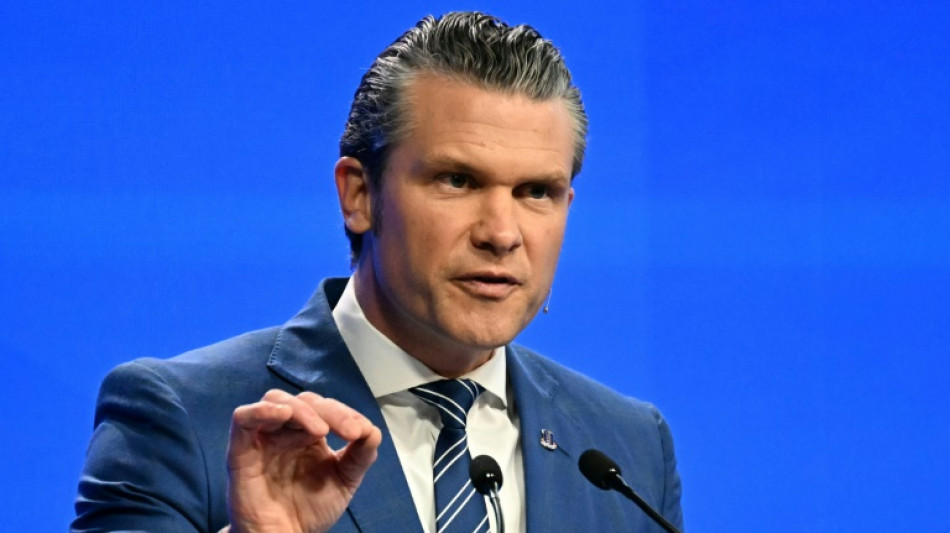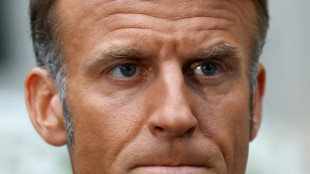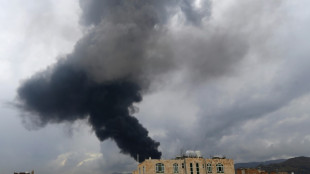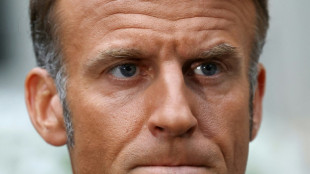
US pressures NATO to seal deal on ramping up defence spending

US defence chief Pete Hegseth on Thursday pushed NATO to agree a deal on ramping up defence spending that can satisfy President Donald Trump at a summit later this month.
The volatile US leader has demanded that alliance members agree to boost defence budgets to five percent of their GDP at the June 24-25 meeting in The Netherlands.
NATO chief Mark Rutte has put forward a compromise agreement for 3.5 percent of GDP on core military spending by 2032, and 1.5 percent on broader security-related areas such as infrastructure.
"We're here to continue the work that President Trump started, which is a commitment to five percent defence spending across this alliance, which we think will happen, we think has to happen by the summit at The Hague," Hegseth said at the start of a meeting with NATO counterparts in Brussels.
"That's our focus. Five percent, combat credible and capable forces, and then making sure NATO is focused on its core mission, continental defence, where its comparative advantage exists."
Multiple diplomats say that Rutte looks on track to secure the deal for the summit in The Hague -- but that some allies are still hesitant about committing to such levels of spending.
"I'm really, absolutely, positively convinced that at the summit with the 32, we will come to an agreement when it comes to this really big increase in defence spending," the NATO chief said on Wednesday.
Most vocal in its reluctance is Spain, which is only set to reach NATO's current target of two percent of GDP by the end of this year.
Diplomats say that other countries are also haggling over making the timeline longer and dropping a demand for core defence spending to increase by 0.2 percentage points each year.
But the deal appears an acceptable compromise to most, which will allow Trump to claim that he has achieved his headline demand, while in reality setting the bar lower for struggling European allies.
The United States has backed Rutte's plan -- but its ambassador to NATO insisted on Wednesday that Washington wants to see "plans, budgets, timelines, deliverables" to meet the target.
In a connected move, NATO ministers will sign off at their meeting in Brussels on new capability targets for the weaponry needed to face the threat from Russia.
NATO officials have estimated that, on average, meeting the new targets would cost countries between 3.5 and 3.7 percent of GDP.
Hegseth, a former TV presenter, rocked NATO on his last visit in February with a fiery warning that Washington could look to scale back its forces in Europe to focus on China.
Since then there has been no concrete announcement from the United States on troop withdrawals, but NATO allies remain on tenterhooks.
- Ukraine question -
With NATO appearing headed for the defence spending deal, another thorny issue now threatens to overshadow the summit in three weeks time: what to do about Ukraine?
Trump's return to the White House ripped up Washington's support for Ukraine and upended the West's approach to Russia's three-year-long war.
Hegseth underlined US disengagement with Kyiv by skipping a meeting of Ukraine's backers in Brussels on Wednesday.
Kyiv's European allies are pressing strongly to overcome US reluctance and invite Ukraine's President Volodymyr Zelensky to The Hague as a sign of support.
So far, NATO has only said that Ukraine will be represented at the gathering -- but has not confirmed that Zelensky will be in attendance.
Q.Nelson--SFF

 London
London

 Manchester
Manchester
 Glasgow
Glasgow
 Dublin
Dublin
 Belfast
Belfast
 Washington
Washington
 Denver
Denver
 Atlanta
Atlanta
 Dallas
Dallas
 Houston Texas
Houston Texas
 New Orleans
New Orleans
 El Paso
El Paso
 Phoenix
Phoenix
 Los Angeles
Los Angeles



